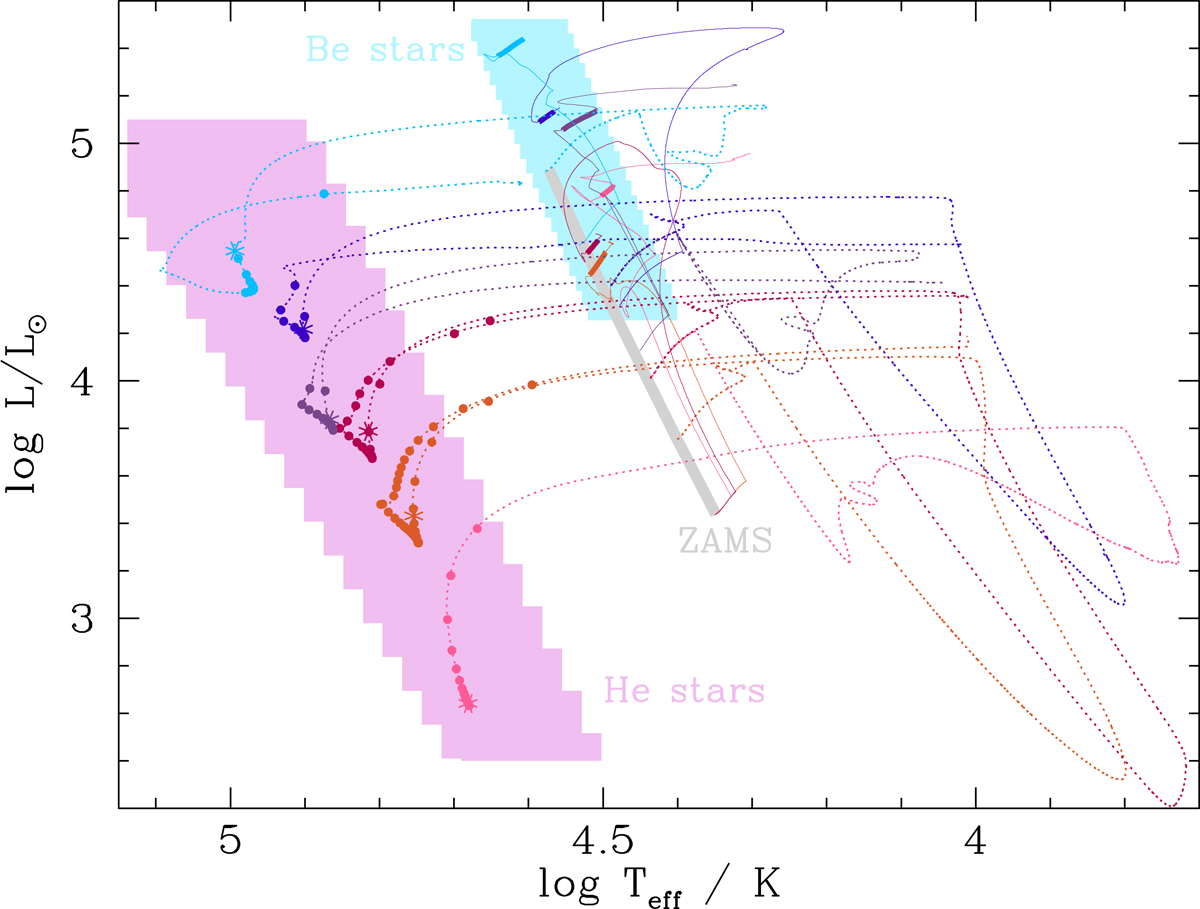Fig. 3.

Evolutionary tracks of mass donors (dotted lines) and mass gainers (solid lines) of the analysed six binary models in the Hertzsprung-Russell diagram. Pairs of tracks with the same colour belong to the same binary system. The thick grey line marks the zero-age main sequence for the initial mass range of our models (i.e. from 8 to 25 M⊙). The thick solid drawn parts of the mass gainers’ tracks marks the phase during which the companion is a He star (starting from a core helium mass fraction of Yc = 0.95 during core helium burning). Corresponding area in HR diagram is coloured light blue and labelled “Be stars”. On the tracks of the mass donors, dots are placed every 105 yr during core helium burning, and a star symbol marks the time at which their core helium mass fraction is Yc = 0.80. The tracks end during the phase of shell helium burning with a small remaining lifetime of the He stars, except for the System No. 1, which ends at Yc = 0.7. Area in the HR diagram in which He star models spend most of their lifetime is coloured in pink and labelled “He stars”. Tracks correspond to binary models Nos. 1 to 6 (Table 2) in increasing order of helium-star luminosity (as marked by the star symbols).
Current usage metrics show cumulative count of Article Views (full-text article views including HTML views, PDF and ePub downloads, according to the available data) and Abstracts Views on Vision4Press platform.
Data correspond to usage on the plateform after 2015. The current usage metrics is available 48-96 hours after online publication and is updated daily on week days.
Initial download of the metrics may take a while.


